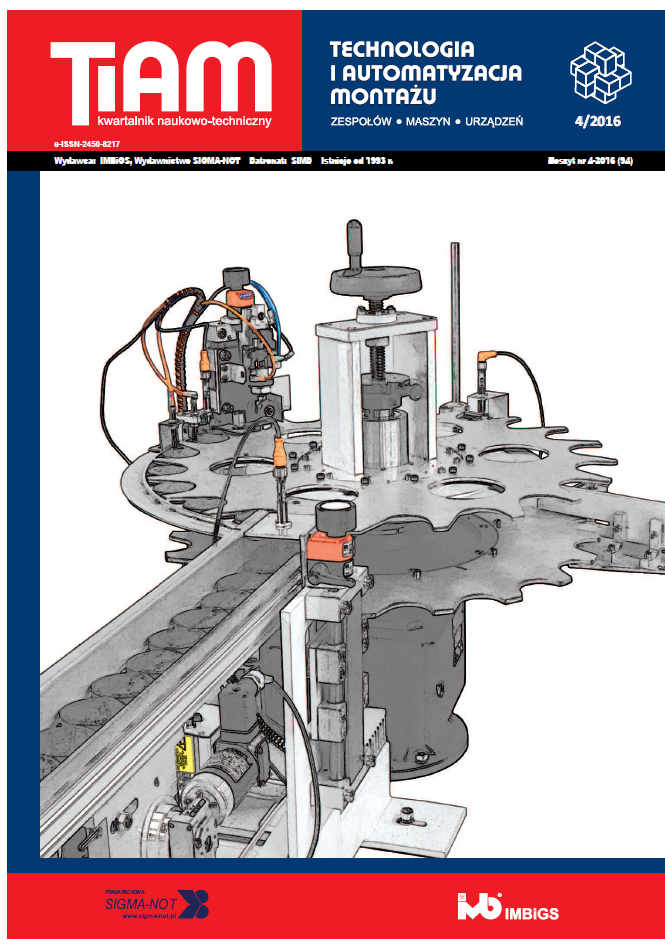Abstract
Edge state plays an important role in the assembly process of the components of finished products. After machining, burrs can appear on the edges of the objects. This concerns such popular machining methods as drilling, milling, turning, etc. Labour consumption of deburring is related to the material properties of the workpiece which influence the strength of the connection between the burr base and the edge of the object. In the case of almost unworkable materials, deburring process can be associated with the intensification of machining energy around the edges with burrs. The paper presents the results of the effect of brushing process on the edges formation of the objects made of Ti6Al4V titanium alloy produced in the milling process. Edge states after deburring with the use of brushing process was determined. The fixed parameters of milling and the variable conditions of brushing were used. Based on studies conclusions were formed.
This is an Open Access article distributed under the terms of the Creative Commons Attribution License CC BY 4.0 (https://creativecommons.org/licenses/by/4.0/)
References
Łunarski J., W. Szabajkowicz. 1993. „Automatyzacja procesów technologicznych montażu maszyn”. Warszawa: WNT.
Matuszak J., K. Zaleski. 2014. “Edge states after wire brushing of magnesium alloys”. Aircraft Eng & Aerospace Tech. 86 (4): 328–335.
Matuszak, J., K. Zaleski. 2013. “Effect of brushing parameters upon edge states after wire brushing of AZ91 HP magnesium alloy”. Advances in Science and Technology Research Journal 7, 20.
Zaleski K., J. Matuszak. 2013. „Badania porównawcze obróbki krawędzi przedmiotów ze stopu aluminium 7075 i stali C45 metodą szczotkowania”. Technologia i Automatyzacja Montażu (2): 35–39.

